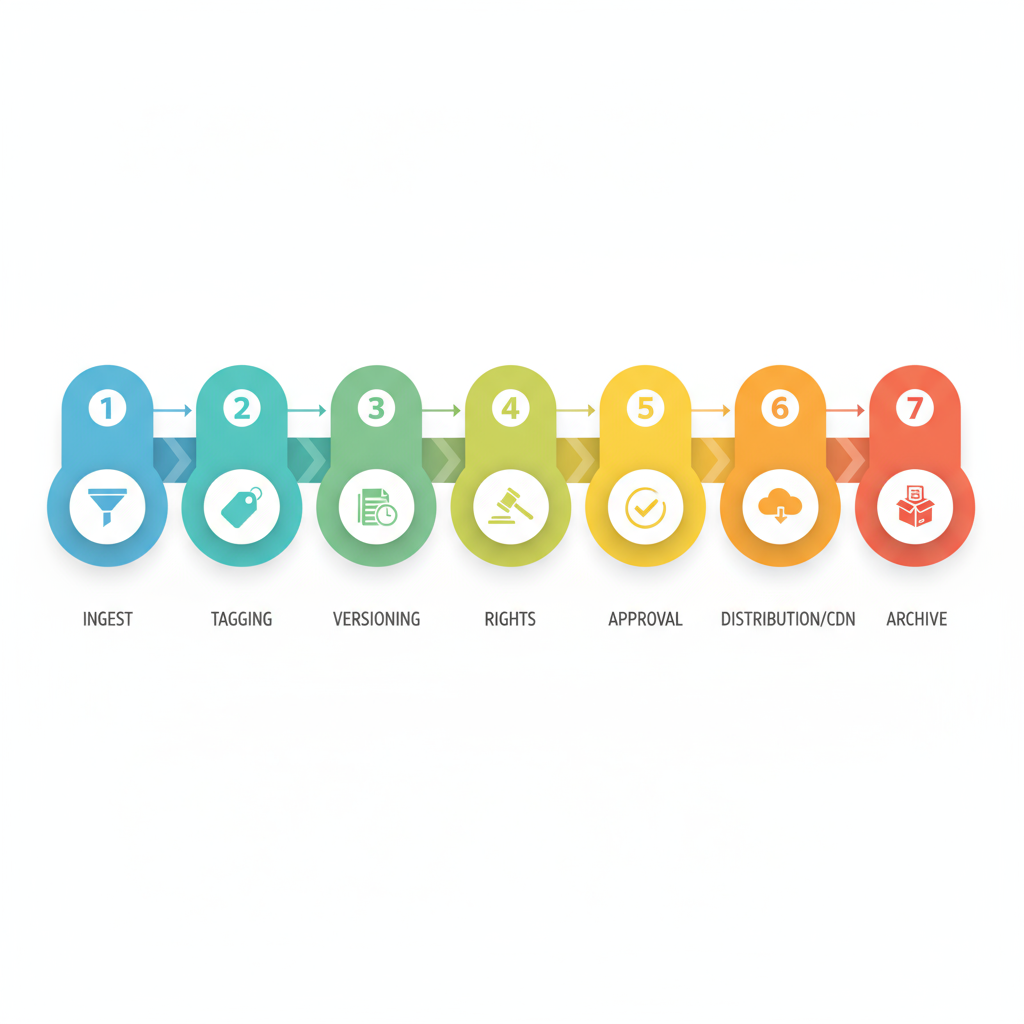What is Digital Asset Management (DAM)?

CGI for strong brand presences
From hero renders to campaign assets: Our 3D studio delivers high-quality 3D images and animations that sell – and seamlessly integrate into your CI. Get a non-binding assessment.
What is Digital Asset Management (DAM)?
Definition Digital Asset Management (DAM)
Digital Asset Management (DAM) is a central system for managing, searching, sharing and playing out digital media - from images and videos to 3D/AR assets and documents. It bundles metadata/taxonomy, versioning & renditions, rights/licenses and release workflows and ensures brand-consistent delivery via interfaces (e.g. store, PIM, CMS, viewer). The aim is to shorten production times, avoid duplicates and provide the right, approved asset for every target group and every channel.
Why DAM is indispensable for brand communication

Want to know how we can visually boost your brand with CGI?
We'll explain the process, effort, and output of CGI product images for your brand communication for your furniture, home & living brand – transparently and without obligation.
Learn more nowCore functions of a modern DAM (compact)
- Metadata & taxonomy: controlled keywords, collections, product/SKU references.
- Versioning & renditions: original, derivatives (formats/sizes), auto-transcodes (e.g. WebP/MP4).
- Rights & licenses: Expiration dates, model/property releases, areas of use.
- Approvals & governance: status (in progress/released), audit trails, audit trail.
- Distribution & Links: Share links, CDN delivery, embeds.
- APIs & integrations: Store, PIM, CMS, 3D/CGI pipelines.
Comparison table: DAM vs. PIM - who stores what?
Remember: PIM controls product data, DAM controls media - together they form the basis of your omnichannel experience.
Practice workflow (CGI & 3D) - in 7 steps
Step 1: Define the master asset: The final motif/video/3D as the "single source of truth".
Step 2: Create metadata cleanly: product, collection, room type, season, campaign abbreviation; maintain IPTC/XMP fields consistently - guideline: IPTC Photo Metadata Standard.
Step 3: Create variants & renditions: social formats, web hero, print TIFF, viewer thumbnails; automate technical derivations.
Step 4: Maintain rights & releases: Useful life, territories, model/property releases, embargo.
Step5: Release & governance: dual control principle, status change (In progress → Correction → Released).
Step 6: Distribution & tracking: Playout to shop/CMS, share links, CDN; avoid broken links through stable IDs.
Step 7: Archive & Retention: Mark expired licenses; automatically delist outdated assets.
DAM workflow: from ingest to archive

DAM in the 3D pipeline - where it really helps you
- CGI production: Render derivatives and cut versions land centrally; transfers to 3D product visualization and social are reproducible.
- Material/scan library: Textures, HDRIs, scans & shaders are cataloged; the basis is a clean capture - see Digitize surfaces.
- 3D playout: Interactive models go into frontends in a controlled manner; formats & transfers documented in the glTF file format.
- Scene authoring: Large setups/variants remain manageable when 3D data is organized as a model - Introduction to OpenUSD.
Comparison table: DAM vs. "Folder on the file server"
Implementation: 6 success factors
- Taxonomy & mandatory fields: 6-10 mandatory fields are sufficient (product, room, mood, target channel, rights, season).
- Naming convention & IDs: Unique, human- & machine-readable keys.
- Roles & rights: Who can upload, share and publish?
- CI rules in the system: color/light guides as reference; defined templates.
- Plan interfaces early on: store, CMS, PIM, 3D viewer on the web.
- Change management: short training courses, micro-guides, "First 10 searches" evaluation.
Common errors & quick fixes
Checklist: Selection of a DAM system (Buy-Brief)
- Must-have: Metadata schema, versioning & renditions, roles/rights, releases, API/CDN, full text & faceted search, bulk edit.
- Nice-to-Have: Similarity-Search, Webhooks, Brand-Portal, Watermark, Rights-Automatic.
- 3D-Fit: Previews (glTF/usdz/obj), poster handling, structured derivations for 3D viewers on the web.
- Security & Ops: SSO, audit logs, region/hosting, backup/restore, SLA.
FAQ - Definition of Digital Asset Management (DAM)
How does a DAM differ from a PIM and CMS?
A DAM manages media (images, videos, 3D/AR) including metadata, rights, versions and renditions. PIM holds product master data (texts, specs, prices, variants). CMS controls pages/content for web & landing pages. In practice: PIM supplies data, DAM supplies media URLs, CMS publishes.
Do we need a DAM if we already use cloud folders (Drive/SharePoint)?
Folders are repositories, not a system for governance. A DAM offers controlled metadata, versioning, rights/licenses, approvals, search facets, CDN delivery and integrations (shop/CMS/PIM). Result: fewer duplicates, fewer misuses, faster retrieval - measurable in minutes instead of hours.
Which metadata is mandatory - especially for brands & 3D assets?
Minimal set: Product/SKU, collection/campaign, motif type/room type, target channel, rights/license (territory/term), status (in progress/released), person responsible, source/origin. For 3D/AR: Format (glTF/USDZ/FBX), LOD/poly budget, texture package (resolution, KTX2 yes/no), poster/thumbnail, viewer compatibility.
How does a DAM secure rights & compliance?
Via mandatory fields (license type, territory, term), upload policies, release workflows and expiry reminders. Expired or unapproved assets are automatically blocked, and approvals and changes are documented in the audit trail. This reduces legal risks and expensive re-shooting.
How does a DAM help with omnichannel delivery (web, social, print, 3D viewer)?
The DAM generates renditions (e.g. WebP, MP4, thumbnails, posters for 3D) and delivers them via stable URLs/CDN. The store, CMS, PIM or 3D viewer are automatically supplied via API/webhooks - without manual reformatting and without "broken" links during updates.
How do you integrate 3D/AR assets into the DAM?
Create 3D master files with a clear naming convention, add preview renditions (turntable/poster), store technical fields (units, scale, LOD, texture names) and check viewer compatibility. For web/AR playouts, you also have an optimized variant (e.g. glTF/GLB, USDZ) ready.
Which KPIs show that our DAM is working?
Search time per asset (before/after go-live), proportion of released assets in circulation, duplicate rate, time-to-publish per channel, API hits/traffic via CDN, rights compliance (assets with complete license fields) and reuse rate (e.g. campaign reuse). These key figures demonstrate efficiency, risk reduction and ROI.
